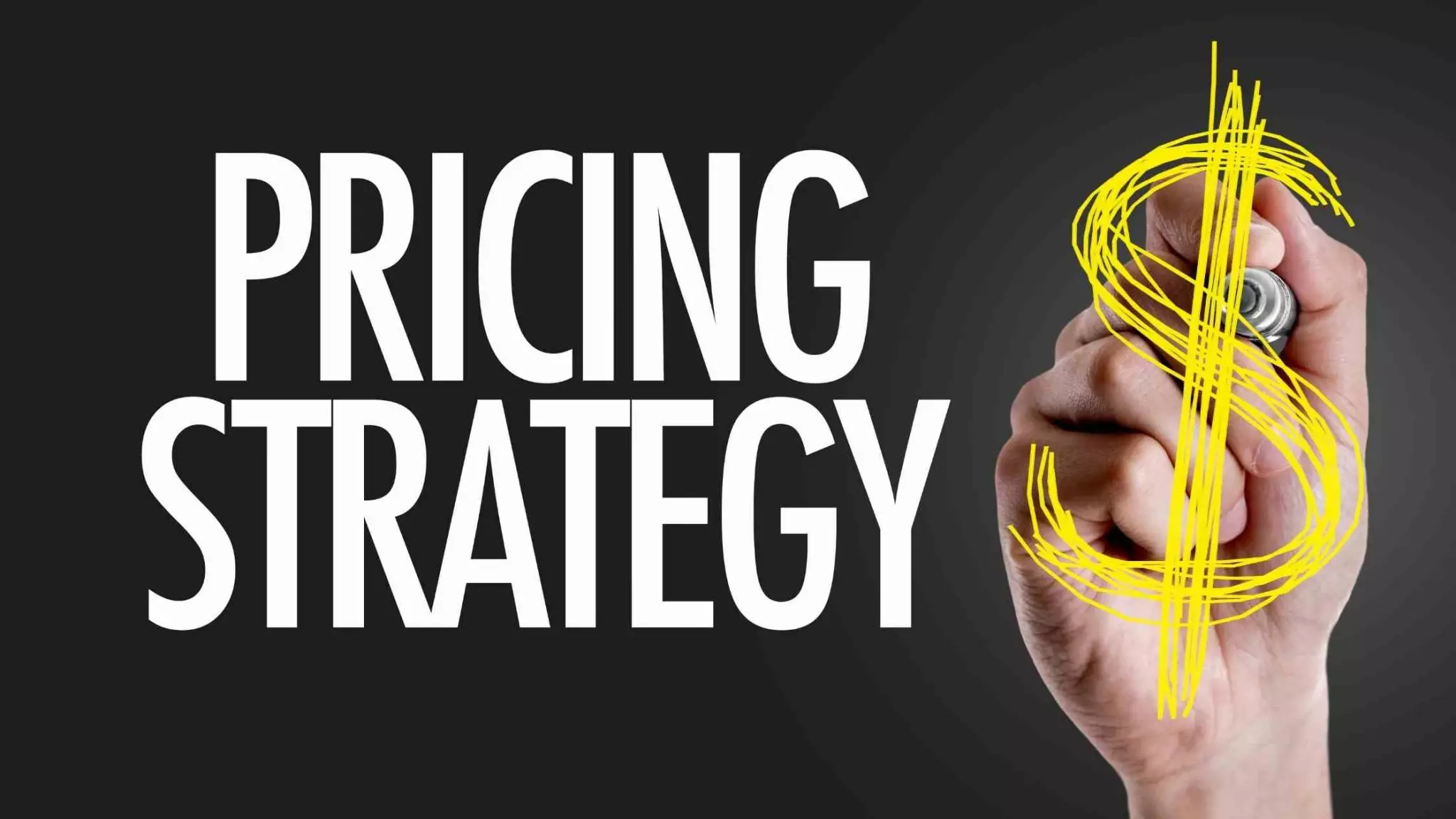Table of Content
Table of Content
Choose the Right Ad Format
Evaluating Various Pricing Models for SaaS

by Hira
- Saas marketing
- August 6, 2024

Your SaaS company’s future depends on you choosing the right pricing strategy. Many SaaS companies shut down because they choose a pricing model that is not sustainable in the long run. Hence you must make sure yours isn’t one of them – by choosing the right pricing model.
What are your pricing options? Which one is best? What are the pros and cons of each choice? And under what conditions should you choose one over the other? This blog will address all these questions if you stick till the end.
Subscription-based Model
This model charges a fixed periodic subscription fee for subscription renewal. This promises a recurring stream of fixed revenue which is an ideal situation for SaaS companies.
Pros
Revenue Predictability:
Facilitates accurate revenue forecasting, empowering informed decision-making and strategic resource allocation.
Enhanced Customer Loyalty:
Fosters enduring customer relationships by incentivizing continued engagement and rewarding loyalty over time.
Seamless Scalability:
Adapts effortlessly to fluctuations in demand, allowing for seamless expansion or contraction of services to match evolving customer needs.
Financial Resilience:
Promotes financial stability by minimizing revenue fluctuations, providing a buffer against market uncertainties and unexpected expenses.
Actionable Insights:
Unlocks invaluable customer data and trends, guiding targeted marketing initiatives and driving iterative product enhancements based on real-world feedback.
Cons
High customer acquisition cost
It’s hard to convince customers to commit to a subscription fee with added upfront deployment costs, especially when your SaaS offering is relatively new with little social proof and fewer success stories. Hence it may require significant upfront investment in marketing to acquire customers.
Competitively disadvantageous
While beneficial for the SAAS companies, this model isn’t particularly attractive to the customers especially if one of your competitors is offering a similar product with a pay-as-you-go model.
Scenarios where this model works best
Enterprise-Level Solutions:
Scenario: A SaaS company providing comprehensive, enterprise-level software solutions.
Reason: Large organizations prefer predictable, stable costs for budgeting purposes. A fixed subscription fee simplifies financial planning and justifies long-term commitments, ensuring steady revenue for the provider.
Integrated Service Offerings:
Scenario: A SaaS company offering a suite of interconnected services or features.
Reason: Bundling multiple services under a single subscription fee encourages customers to utilize the full range of offerings, enhancing overall value and customer satisfaction.
High Upfront Onboarding and Support Costs:
Scenario: A company that invests heavily in customer onboarding and ongoing support.
Reason: The predictable revenue from subscriptions offsets the initial costs of onboarding and providing continuous support, ensuring a return on investment over the subscription period.
Investment and Financial Planning:
Scenario: A SaaS company seeking investment or funding.
Reason: Investors favor companies with predictable and recurring revenue streams. Subscription-based models provide reliable cash flow projections, enhancing the company’s financial stability and attractiveness to investors.
Customer Loyalty and Retention:
Scenario: A company aiming to build long-term relationships and loyalty with its customers.
Reason: Fixed subscription fees encourage ongoing customer engagement and commitment, reducing churn rates and increasing lifetime value.
Resource-Intensive Services:
Scenario: A SaaS company offering services that require significant infrastructure or resource allocation.
Reason: Subscription fees allow for better capacity planning and resource management, ensuring the company can consistently meet customer demands without overextending its resources.
Simplified Billing Processes:
Scenario: A company looking to streamline its billing and administrative processes.
Reason: Subscription models simplify billing procedures, reducing administrative overhead and minimizing the risk of billing errors, improving operational efficiency and customer satisfaction.
Competitive Market Positioning:
Scenario: Operating in a highly competitive market with similar pay-as-you-go offerings.
Reason: Offering a fixed subscription fee can differentiate the company by providing a hassle-free, predictable pricing structure, appealing to customers who prefer to avoid fluctuating costs and complex usage tracking.
Tiered Service Levels and Loyalty Programs:
Scenario: A company implementing loyalty programs or tiered service levels.
Reason: Subscription models facilitate the creation of tiered offerings, encouraging customers to upgrade for additional benefits and features, thereby increasing revenue and customer loyalty.
Ways to Implement Subscription-based Model
Tiered pricing
Tiered Pricing offers customers a range of options at different price points, typically divided into basic, standard, and premium tiers. However, too many tiers can overwhelm customers, leading to analysis paralysis. This approach works well for most SaaS companies and can be combined with other models in hybrid billing as HubSpot does.
Flat rate pricing
Flat-rate pricing charges a single price for a service with fixed features, making it easy for both customers and the company. It’s effective in simple solutions and markets with few competitors. Basecamp uses this model, offering full platform access for $99 per month.
Pay-as-you-go Model
The pay-as-you-go model operates similarly to a subscription model but does not provide a fixed revenue stream. Unlike subscription fees, which are fixed and do not vary with usage, the pay-as-you-go model charges customers based on their actual product usage.
The two types of pay-as-you-go model
Consumption-Based PAYG
In this model, you pay according to the amount of a resource you use. The cost increases with usage. For example, Stripe charges a fee per credit card transaction (2.9% plus 30¢) with no monthly fees, meaning you only pay for what you use.
Credit-Based PAYG
Here, you buy credits in advance which can then be exchanged for services. If you need more, you can buy extra credits as needed. This model benefits companies as they receive payment upfront, but users may risk not using all their purchased credits.
Pros and Cons of the Pay-as-You-Go Model for SaaS Companies
Pros:
Flexibility for Customers: Customers only pay for what they use, making this model attractive to those who want to avoid upfront costs or overpaying for unused features.
Scalability: As usage grows, revenue grows. This model can scale effectively with customer usage patterns, aligning revenue with the value provided.
Reduced Barriers to Entry: Lower initial costs can attract a broader customer base, including small businesses or startups with limited budgets.
Better Customer Insights: Tracking usage provides valuable data on how customers interact with the service, allowing for more targeted improvements and personalized experiences.
Customer Retention: Since customers are billed based on their usage, they are less likely to churn due to perceived unfair pricing.
Cons:
Revenue Predictability: The model lacks the predictability of fixed subscription fees, which can complicate financial planning and forecasting.
Complex Billing: Implementing and managing usage-based billing can be technically challenging and require robust infrastructure.
Potential for Revenue Loss: Inconsistent usage can lead to fluctuating revenues, potentially causing financial instability.
Customer Hesitation: Some customers might be wary of unpredictable costs, preferring the certainty of a fixed subscription.
Ideal Scenarios for Using the Pay-as-You-Go Model
Variable Usage Patterns: Ideal for services with significant variability in usage, such as cloud storage, where customer needs can fluctuate dramatically.
Targeting Startups and Small Businesses: For SaaS solutions aimed at startups and small businesses that may not have the budget for high upfront costs, pay-as-you-go can be very attractive.
Customer Acquisition Strategy: When the goal is to lower the barrier to entry and rapidly increase the customer base, this model can be effective.
Product Experimentation: Useful for products still in development or beta stages where customer usage patterns are still being understood.
Infrastructure Services: Particularly suitable for infrastructure services like AWS or Azure, where customers pay based on the resources they consume.
Tips to make this model work
Closely align your SaaS offering with your audience’s pain point and focus on making the product features indispensable – so the usage isn’t an option but a necessity.
Lifetime Deal – One-time Payment Model
Lifetime deals (LTDs) in the Software as a Service (SaaS) industry refer to special offers where customers pay a one-time fee for perpetual access to a product or service. Since lifetime deals are essentially pre-paid subscriptions, they provide a significant cash infusion for SaaS companies upfront. This can be particularly advantageous for startups or companies seeking immediate capital.
Pros for SaaS companies:
Immediate Revenue Boost: LTDs can generate a substantial influx of cash flow upfront, aiding in financial stability and potential growth opportunities.
Customer Acquisition: Offering lifetime deals can attract a large number of customers quickly, helping to build a user base and gain market share in a shorter period.
Feedback and Testing: Early adopters of lifetime deals often provide valuable feedback, enabling companies to improve their product and iterate more effectively based on real-world usage.
Brand Exposure: LTD promotions can increase brand visibility and generate buzz within the SaaS community, potentially leading to additional sales through word-of-mouth marketing.
Cons for SaaS companies:
Revenue Stability: While lifetime deals provide immediate revenue, they may not ensure a stable income stream in the long term, potentially leading to cash flow issues in the future.
Profit Margins: Offering lifetime deals at a one-time fee can limit profit margins compared to recurring subscription models, especially if the product requires ongoing maintenance or support.
Customer Support Overload: A sudden influx of lifetime deal customers can strain customer support resources, leading to longer response times and decreased satisfaction among users.
Churn Risk: Customers who purchase lifetime deals may not be as committed to the product compared to subscribers who pay recurring fees. This increases the risk of churn, impacting overall revenue and customer retention efforts.
Scenarios in which going for Lifetime deals makes sense
Early-Stage Startups: For new SaaS startups looking to gain traction and secure initial funding, offering lifetime deals can provide a significant cash injection upfront. This influx of capital can be crucial for product development, marketing efforts, and scaling operations in the early stages.
Early Adoption by Enterprise Clients: B2B SaaS companies targeting enterprises may offer lifetime deals to early adopters within these organizations. By providing a compelling upfront value proposition, such as significant cost savings or exclusive features, companies can secure long-term contracts with key clients, helping to establish credibility and drive further adoption within the enterprise sector.
Customized Solutions for Specific Industries: In industries with unique requirements or niche markets, offering lifetime deals can be a strategic way to attract customers who are seeking tailored solutions. By customizing the product or service to meet the specific needs of these industries, B2B SaaS companies can demonstrate expertise and establish themselves as industry leaders, driving long-term loyalty and retention.
Partnerships and Strategic Alliances: B2B SaaS companies may offer lifetime deals as part of strategic partnerships or alliances with complementary businesses. By bundling products or services together and offering them at a discounted rate, companies can create additional value for customers while expanding their reach and distribution channels.
Enterprise Expansion and Upselling: For B2B SaaS companies already serving enterprise clients on a subscription basis, offering lifetime deals can be a way to upsell additional products or services. By providing existing customers with the opportunity to purchase lifetime access to complementary offerings, companies can increase customer lifetime value and deepen relationships with key accounts.
Conclusion
There is no definite answer to the question of what’s the right pricing model for SaaS products. It’s situational. This blog educates the reader on pros and cons of three popular SaaS pricing models, namely lifetime deals subscription-based pricing, and pay-as-you-go model, and outlines situations in which each of them may be ideal.
However, if you need expert consultancy on SaaS marketing, consider getting in touch with Hyperminds – an established SaaS marketing agency.
